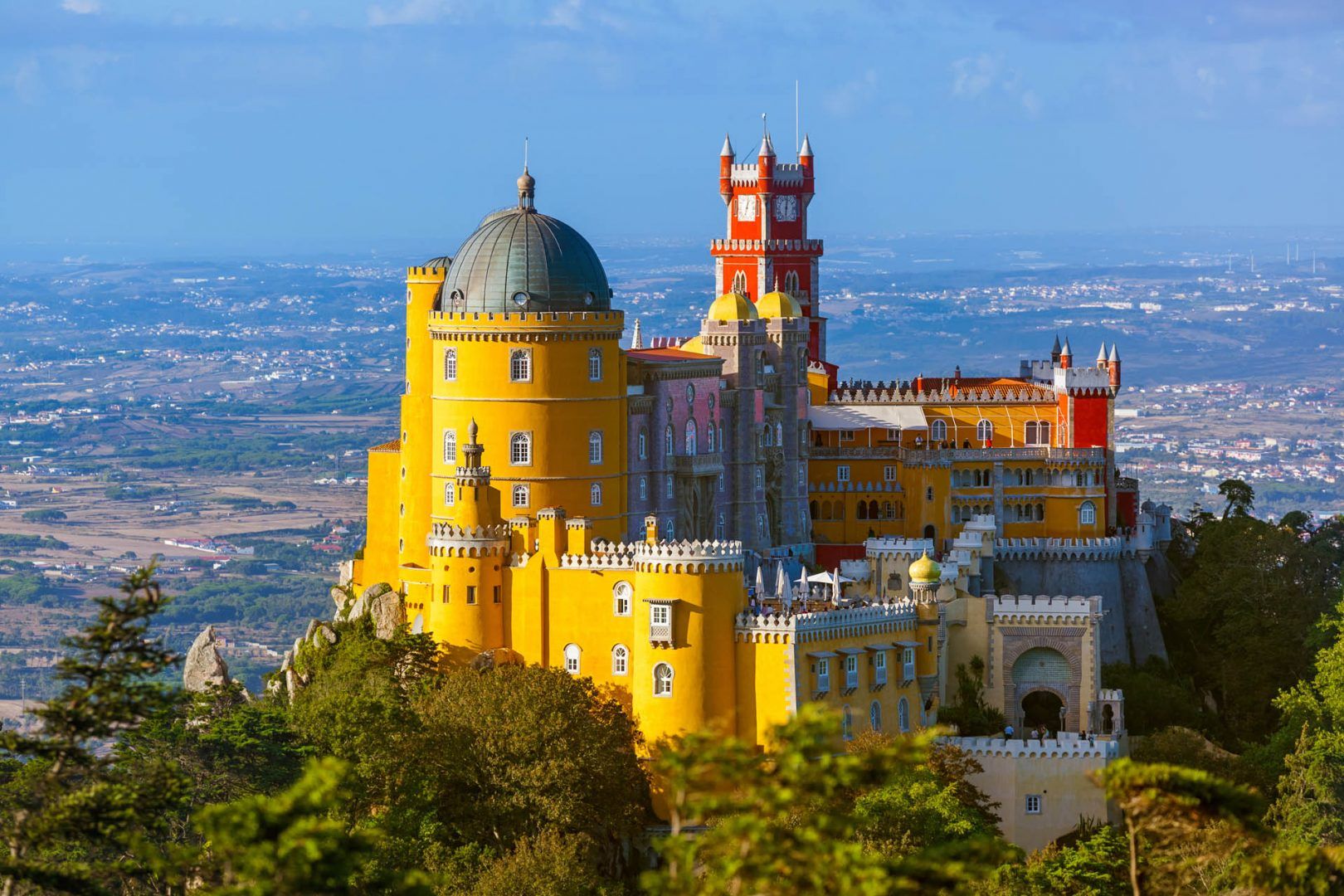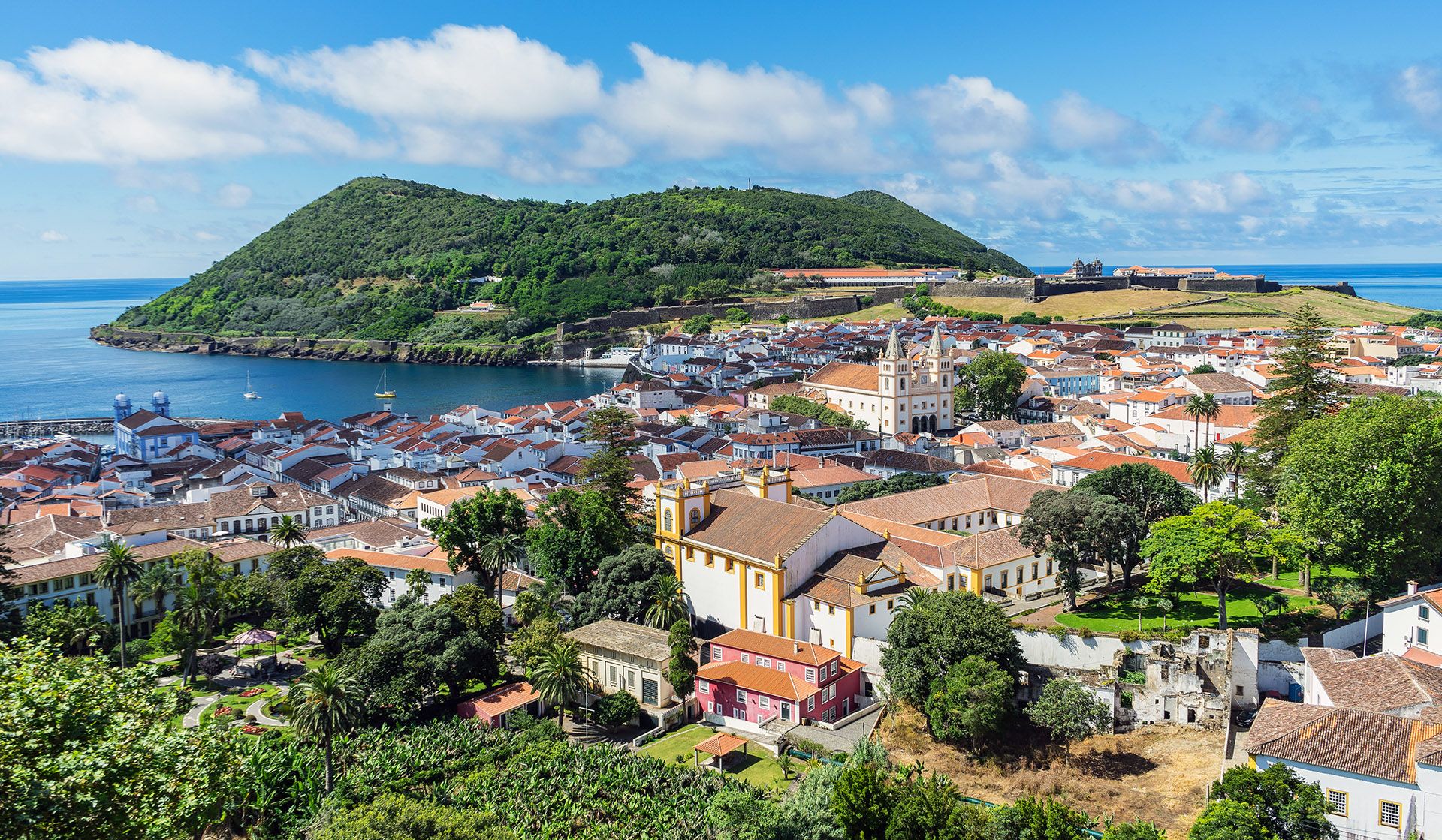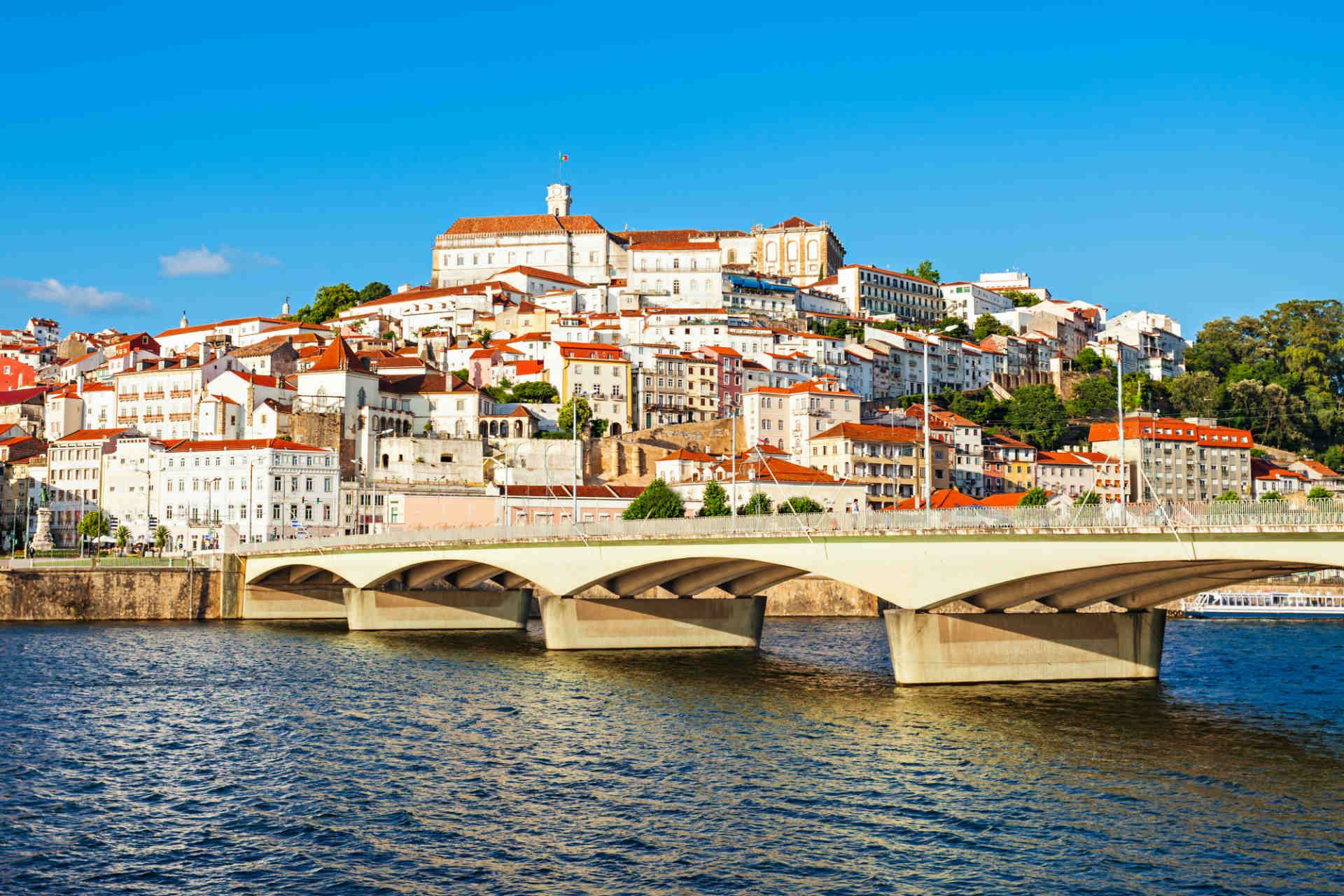Travel advice for Portugal
From travel safety to visa requirements, discover the best tips for visiting Portugal
- Europe
- Portugal
Book your individual trip, stress-free with local travel experts
Plan your tailor-made trip with a local expert
Book securely with money-back guarantee
Travel stress-free with local assistance and 24/7 support
Matthew
Just wanted to express my thanks to Joel and Rough Guides for a wonderful trip! Everything was well-chosen and we just loved all of the hotels, sightseeing...
Read all reviews ⤍Portugal is a destination that caters for both short holidays and long trips. But what is the ideal Portugal itinerary? Truth be told, the perfect itinerary is different for each person. Factors such as the time available, budget, interests and whether you are travelling with family, friends or alone will influence your travel plan. Whatever your schedule and budget, we've put together some sample Portugal itineraries to inspire you to travel. Found one that catches your eye? Contact a local Portugal expert to book your trip today.
To fully experience the diverse charms of Portugal, it is important to follow a well thought out itinerary. Here are some Portugal itineraries for different lengths of stay:
Each itinerary is designed to suit different preferences and paces, ensuring that your visit to Portugal is as rich and enjoyable as possible.

The Algarve, Portugal
This 7-day action-packed trip will take you to the vibrant cities of Porto and Vigo, exploring the rich culture of Portugal and Spain.

Colourful Sintra, Portugal palace Palácio da Pena © Shutterstock
This extended 10-day itinerary in Portugal covers some of Portugal's most enchanting destinations - Madeira and the Azores - combining exploration and relaxation in Portugal's most scenic corners.

Angra do Heroismo z Alto da Memoria, Terceira, Azores, Portugal © Francesco Bonino/Shutterstock
If time permits, choose this 14-day grand tour of Portugal that takes you from the historic streets of Porto to the charming Algarve coast. Each day opens a new chapter in this scenic journey through Portugal's most enchanting destinations.

Ria Formosa - Algarve - Portugal © Michael Schroeder/Shutterstock
Portugal offers a wide range of ways to get around to suit different styles and preferences. Here's a list of the best ways to get around and explore Portugal's diverse landscapes and vibrant cities:
Also don't miss our guide on how to get to Portugal.

Beach of São Rafael in Albufeira, Algarve, Portugal © Shutterstock
Portugal is recognised as a relatively budget destination. A daily budget of 45-90 EUR is usually sufficient for a comfortable stay, making Portugal an attractive option for travellers. If you are looking for a more luxurious holiday, you can count on 180-270 EUR per day.
When it comes to accommodation, Portugal is tailored for different levels of affordability: from economical hostels priced from 9 to 18 EUR per night to high-end five-star hotels, which in major cities such as Lisbon and Porto can cost around 180 EUR per night.
Eating out in Portugal is also very favourable. Many local restaurants offer hearty Portuguese dishes such as bacalhau or piri piri chicken for as little as 4.5-9 EUR, allowing you to enjoy the country's culinary delights without overpaying. The cost may increase if you opt for more exclusive restaurants or take advantage of private tours and upscale resorts.
The required length of your stay in Portugal can vary depending on your interests, but here's how to maximise your time:
If you have a week at your disposal focus on major cities like Lisbon and Porto to enjoy their rich culture and history without rushing.
Extending your trip to ten days will allow you to visit the stunning Algarve coastline or the historic gems of central Portugal, such as Obidos and the monasteries of Batalha and Alcobaça.
A two-week stay allows you to thoroughly explore the mainland, combining the north and south of the country with natural wonders such as the Douro Valley.
Three weeks will give you enough time for a deeper dive, perhaps visiting the Azores or Madeira, while a full month allows you to leisurely explore little-known regions and take part in local festivals.

Lighthouse in Foz do Douro © AdobeStock
Now rebranded as South Centro de Portugal and northwest Alentejo, the historic districts of Estremadura and Ribatejo have some of the most famous buildings in Portugal. The monastery at Alcobaça, the extraordinary abbey at Batalha and the headquarters of the Knights Templar in Tomar are all easily accessible, even by public transport, and offer a fascinating glimpse into the country’s tangled past.
Other attractions are equally high profile, from the walled medieval town of Óbidos to the tremendous castle at Leiria, while the obscenely ornate palace-monastery of Mafra always intrigues. Heads are also turned by the shrine at Fátima, the country’s (and, indeed, one of the world’s) most important pilgrimage sites.
The province of Beira Litoral is dominated by the city of Coimbra, which, with Guimarães, Lisbon and Porto, forms the quartet of Portugal’s historic capitals. Situated on a steep hill above the Rio Mondego, it’s a wonderfully moody place of ancient alleys and lanes, twisting and climbing around the country’s oldest university.
As a base for exploring the region, the city can’t be beaten, with Portugal’s most extensive Roman site, Conímbriga, 16km to the southwest, the castle at Montemor-o-Velho, 32km west, and the delightful spa town of Luso and ancient forest of Buçaco under an hour’s journey to the north.

Coimbra, Portugal © saiko3p/hutterstock
The two historic mountain provinces of Beira Alta (Upper) and Beira Baixa (Lower) feature some of the most spectacular landscapes in the country, from upland plains of enormous boulders to towering mountain peaks. This harsh but beautiful landscape was home to the mighty warrior Viriatus, who used its remote wildness to his advantage when repelling the Romans. Later, as Portugal strived for nationhood, many of the towns along and near the disputed border with Spain acquired mighty castles, still in existence today.
Lisbon might be the country’s capital, but Portugal’s second city, Porto, is certainly not second best. Dramatically situated at the mouth of the Rio Douro, it’s a massively atmospheric place that’s well worth a couple of days of your time – more if you plan to make a serious assault on the famous port wine lodges of Vila Nova de Gaia, located just across the river.
For a convenient trip to the seaside, the pretty town of Vila do Conde, 45 minutes to the north, offers a taste of what’s to come as you head up the coast towards the Minho. East of Porto, meanwhile, the N15 or much faster A4 motorway runs inland to the vinho verde-producing towns of Penafiel and Amarante, the latter perhaps the single most attractive town in the region, set on the lazy Rio Tâmega.
It’s around 100km from Porto to the mouth of the Rio Minho, a broad river of even broader historical and cultural significance for the Portuguese since it marks the border with neighbouring Spain. The river has lent its name to the entire northwestern province, the Minho – which tourists may see referred to as a rebranded sub-region of Porto and North Portugal. This area encompasses a range of postcard-worthy landscapes and features that could almost be Portugal in a microcosm: dreamy river scenes, high mountains, rolling vineyards, historic towns, dramatic Atlantic beaches, ancient religious foundations and mysterious archaeological sites.
Add a modern network of roads – it takes only an hour or so to get from the main towns to remote hiking villages – and a useful regional bus and train network ensures the Minho is an instantly appealing region to visit, as a sort of Portugal-in-a nutshell experience, easily accessible straight out of Porto airport

Monsaraz castle and village and hot air balloons, Alentejo - Portugal © Shutterstock
The Alentejo covers a huge area, around a third of the country, stretching south from the Rio Tejo to the northern mountain ranges of the Algarve – the name derives from the words além do Tejo, beyond the Tejo River. This is Portugal’s garden, the bulk of the region given over to huge cork plantations, wheat fields and vineyards – and though much of it is flat, the region repays exploration, offering unexpected surprises, from ancient dolmens and superbly sited castles to Roman ruins and sweeping Atlantic beaches.
Much of the population makes a living from the huge agricultural estates known as latifúndios, which are handed down from generation to generation – many have been in existence since Roman times. The vast farms are generally wildlife-friendly – the Alentejo is home to wild boar and hundreds of species of bird, from black stork to great bustard.
With many of the country’s safest and loveliest beaches and a year-round balmy climate, it is not surprising that the Algarve is Portugal’s most popular region for holidaymakers. Inevitably, this also means that stretches of the coast – in particular from Faro West to Albufeira – are heavily developed, though even here the beaches are first-rate, as are the facilities. Elsewhere in the Algarve, especially around Sagres and Tavira, the surroundings are more attractive, with laidback resorts and low-key development.

Ponta Ruiva beach , Algarve Portugal © Rjc9666/Shutterstock
The best time to visit Portugal, or ‘high season’, is usually from May to September, when the weather is warm and sunny, ideal for beach holidays and exploring the cities without the inconvenience of rain. This period is ideal for outdoor activities such as visiting vineyards, hiking in national parks and the many festivals taking place throughout the country.
Portugal's 'low season' lasts from October to April. During these months you can expect cooler temperatures and more rainfall, especially in the north of the country. However, there are fewer tourists and travel and accommodation prices drop. The landscapes are very green and periods of rain are often followed by clear and crisp days. This season has its own charm if you appreciate quiet travelling and the picturesque, misty landscapes of Portugal's scenic spots.
The cost of travelling to Portugal varies between high and low seasons. During high season, accommodation and airfares can increase significantly due to increased demand. For popular destinations such as the Algarve or Lisbon, it is recommended to book tickets in advance.
Conversely, in the low season, prices will be lower due to fewer tourists. Choosing accommodation in central areas, such as Baixa in Lisbon or Ribeira in Porto, can be more affordable and you will still be close to the main attractions. If you are flexible with dates and don't mind the rain, travelling in the low season can be very economical.
Want to explore Europe even more? We have prepared the most convenient European itineraries for you to explore the continent.

Praca de Almeida Garrett, Porto, Portugal © AdobeStock
UK citizens planning to visit Portugal can enter the country without a visa for short stays of up to 90 days within 180 days. This applies to both tourist and business visits, allowing you to enjoy Portugal's rich culture, beautiful scenery and historical sites without the need for a visa.
US citizens can also enter Portugal without a visa for up to 90 days within 180 days. This makes travelling to Portugal easy, whether you are coming for leisure, business or both.
For stays of more than 90 days, UK and US citizens need to apply for a visa appropriate to the nature of the visit (e.g. work, study or long-term tourist). This can usually be done through the Portuguese embassy or consulate in your country.
To ensure a smooth trip, also read our essential Portugal travel tips for year-round trips.
From travel safety to visa requirements, discover the best tips for visiting Portugal
written by
Olga Sitnitsa
updated 10.06.2024
Online editor at Rough Guides, specialising in travel content. Passionate about creating compelling stories and inspiring others to explore the world.